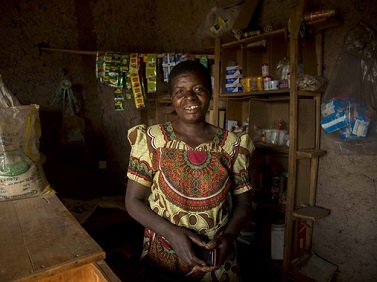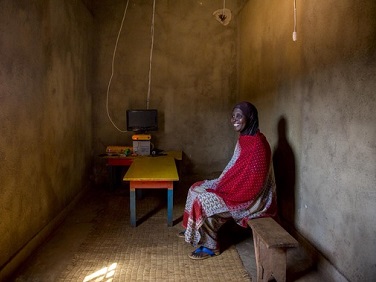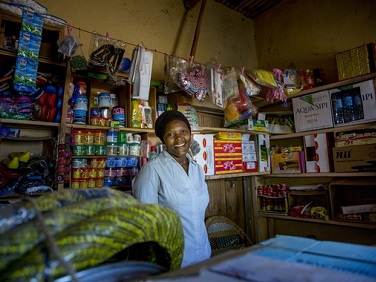Insights from Participatory Evaluation Processes: Adapting to Local Demands
This article previews Hand in Hand’s peer-learning session at the SEEP Annual Conference 2017. It first appeared on The SEEP Network blog
Your proposal was so scalable, it made USAID weep. Your logframe, so flawless it was exhibited at MoMA. Bono himself called to congratulate you on a “totally rockin’ independent baseline study”. But one year into program delivery, credit uptake is waning and dropout rates are creeping higher by the week.
What went wrong?
That’s the question new SEEP member Hand in Hand was forced to confront when two of our programs – one in Afghanistan, the other in Kenya – were threatened by similar issues. Despite more than 10 years’ experience training Savings Groups members how to launch their own microenterprises – resulting in more than 3 million new and improved jobs – we found ourselves humbled by an inescapable truth: nothing gets in the way of a masterfully designed program quite like reality. Adaptive management isn’t merely crucial to success – it’s necessary to survive.
This blog, and our session at the 2017 SEEP Annual Conference – ‘Insights from Participatory Evaluation Processes: Adapting to Local Demands’ on Tuesday, October 3 at 2:15pm – ponders a central element of adaptive management: feedback. In doing so, it posits a package of feedback mechanisms that can be (more or less) universally applied to produce useful learning, drawing on examples from the aforementioned cases, plus a third from VisionFund in Tanzania.
The learning that these mechanisms produced varied across contexts, but in each case the results were transformative, compelling Hand in Hand to redesign its theory of change and exit strategies in Afghanistan and Kenya respectively. Meanwhile in Tanzania, VisionFund applied a similar package of mechanisms during its pilot phase, and shares its experience of taking learning to scale.
The Big Five: Feedback Mechanisms for Useful Learning
Feedback is only as good as the sources that provide it. In order to obtain the fullest picture possible, our package of mechanisms draws on the following sources and methods:
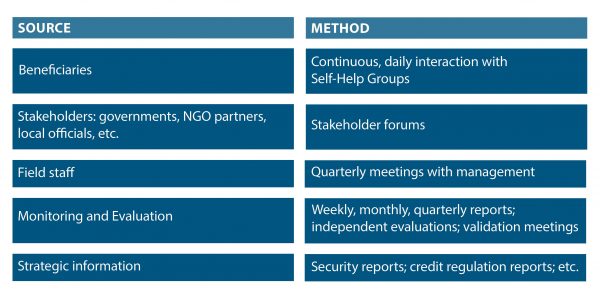
Each of the following cases employed our package of mechanisms. All have been edited for brevity. For the full picture, please attend our session on October 3.
Case One: Hand in Hand, Afghanistan
Occasionally, sources of feedback are in perfect harmony. Such was the case for Hand in Hand Afghanistan, who administered an Enterprise Incubation Fund (EIF) to finance members’ microenterprises where other institutions wouldn’t. Increasing numbers of beneficiaries said they were loath to take loans in remote rural areas where the Taliban had identified credit programs as an opportunity to disrupt NGO activity, branding them as a Western imposition. M&E data showing reduced uptake confirmed their waning interest. Other NGOs had by and large abandoned cost-recovery models in favor of flat-out grants, rendering microfinance even more unattractive. Field staff reported difficulties in recovering loans (and in some cases received anonymous threats). And strategic information pointing to a resurgent Taliban provided scant hope Afghanistan’s credit environment would improve anytime soon.
With all sources of feedback pointing in the same direction – decisively away from our microfinance component – Hand in Hand closed the EIF, adopting productive asset transfer in its place. In the time since, we have distributed some 21,300 Enterprise Startup Toolkits containing all the necessary inputs to launch a business in nine accessible, high-margin sectors such as beekeeping and tailoring, designed to maintain the self-help ethos that lay behind the credit component. Feedback has again been unanimous – this time in our favor.
Case Two: Hand in Hand, Kenya
Things would not be so straightforward in Kenya, where Hand in Hand’s EIF faced the opposite problem: it was too popular. Prior to October 2016, we provided three cycles of subsidized microcredit to members. Not surprisingly, beneficiaries were happy to continue borrowing at slightly below-market rates. But field staff complained they were overworked – tied to old members by cycle after cycle of credit while juggling ambitious recruitment targets for new members. The M&E data agreed: recruitment was indeed slowing down. Strategic information meanwhile pointed to a robust ecosystem of local MFIs, suggesting credit was available from other institutions.
Staff and management met in September, 2016 and immediately embarked on a set of program reforms, reducing the number of loan cycles from three to one. A 27-month phase-out strategy was also agreed, whereby groups would receive nine months of intensive training, 12 months for the EIF credit cycle, and six months of support on market linkages for commodities and loans. Finally, it was agreed that after 27 months, we would help mobilise members into co-operatives known as Community-Based Organisations that would help them lend to each other and gain access to bigger markets and value chains.
Initial feedback suggests the changeover is working favorably.
Case Three: VisionFund, Tanzania
From October 2016 until August 2017, VisionFund Tanzania, World Vision Tanzania and private sector grower/exporter the Great African Food Company (GAFCo) partnered to run seven pilots in different regions of Tanzania with more 3,000 smallholder sunflower and kidney bean farmers. The goal was to improve these beneficiaries’ outputs and, ultimately, their livelihoods.
Involving technology, crop insurance, loan credit processes, payment to farmers, and beneficiary engagement and education, the pilot was highly complex, and field staff reported challenges testing so many combined elements in a variety of locations. But partners had identified both a need and an opportunity: GAFCo needed to generate and test volume and quality for its European buyers, and there was an opportunity to test the approach in parallel across regions.
A major review took place in July 2017, following a review process experiment in June. Senior management from the three partners met with beneficiaries and external stakeholders, including village elders and local and regional government, as part of a 10-day M&E trip visiting each of the pilot locations and engaging in detailed conversations. The process resulted in identifying improvements in beneficiary education, explaining better to village authorities the detail behind areas such as crop insurance, and generating buy-in from local officials.
The model has now been adapted for a wider rollout from October, with an ongoing monitoring of the engagement with beneficiaries and other stakeholders to test the scalability and acceptability of the updated model and improvements in client training.

Hand in Hand creates 3 millionth job
Fourteen years ago, Percy Barnevik and Dr Kalpana Sankar joined forces to expand a small charity in southern India that provided free schooling to children working in the local silk trade. It was called Hand in Hand.
They soon realised the real problem wasn’t a lack of schools; it was the desperation that forced parents to send their children to the factories in the first place. “We had to attack the root cause of the problem: poverty,” says Barnevik.
Fast-forward to today and that’s exactly what Hand in Hand has done, fighting poverty with business and skills training from Afghanistan to Zimbabwe and in eight countries in between. Today, we’re proud to announce a major milestone in our story: the creation of Hand in Hand’s 3 millionth job.
“Even when they’re undernourished, downtrodden and illiterate, Hand in Hand’s entrepreneurs have an enormous will,” says Barnevik, now Hand in Hand’s honorary chair. “When they get a chance they’re not letting it go by. These women can move mountains.”
Here’s to fourteen more years, millions more jobs and more moved mountains.
Hand in Hand must ‘prioritise income diversification’ in Tanzania: study
Hand in Hand’s programme in Tanzania will hinge on two key factors, according to a new report from Ipsos: changing the way people think about Self-Help Groups and helping our members diversify their incomes.
Published this month, the report surveyed 4,000 adults in Arusha and Kilimanjaro, providing Hand’s in Hand’s clearest picture yet of life in our target areas and establishing the baseline by which future progress will be measured. With the report finished, group mobilisation can begin later this year.
Our target districts
There is no shortage of districts in Tanzania that could benefit from Hand in Hand’s training. To begin with, we’re focusing on five: Ashura Rural and Meru in Aruha, and Moshi Rural, Hai and Rombo in Kilimanjaro. Besides their proximity to our headquarters in Kenya, the districts were chosen because each has a population density of at least 150 people per square kilometre, the minimum required to make our programme viable according to Ipsos.
More than half of Arushans (55 percent) and one-third of Kilimajarans (34 percent) live in poverty, according to the UNDP 2014 Human Development Report. Across our target districts, the estimated rural adult population living in poverty is 293,110. If Hand in Hand achieves our goal, a significant majority (68 percent) of impoverished adults in our target areas will see their lives transformed.
By the numbers
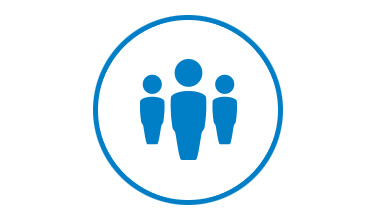
Rural adult population living in poverty in Hand in Hand’s target areas: 293,110
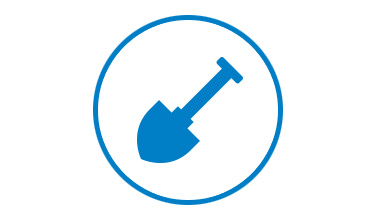
Number of jobs we aim to create: 200,000
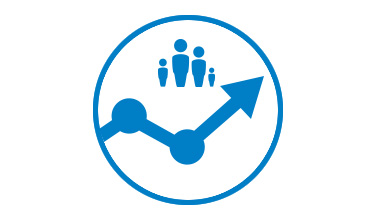
Percentage of target rural poor with improved incomes: 68 percent
Before we can start to mobilise in earnest, we need to know everything we can about our future members. What are their livelihoods? How can we help them most effectively? What threats do they most consistently face? Only 9 percent of households surveyed by Ipsos earned their income solely from business – owning a shop, say, or transporting people and goods on motorcycles (known in Eastern Africa as boda boda). An additional 15 percent earned a portion of their income from business. The rest, 76 percent, relied entirely on farming to see them through, many at the subsistence level. It’s no surprise, then, that only 57 percent of respondents are putting money aside as savings. Perhaps more surprising was the degree of organisation among those surveyed: 34 percent of respondents already belong to Self-Help Groups. The groups exist chiefly to support members in times of trouble (46 percent) and occasionally as a source of microfinance (20 percent), and are registered with local government.
Challenges
There are two seasons in northern Tanzania: rainy and dry. For the 91 percent of adults who rely on agriculture for some or all of their incomes, says Ipsos, the resulting boom-and-bust crop cycle means periods of relative abundance followed by periods of scarcity and hunger.
Making matters worse, ‘rainy’ and ‘dry’ can often mean ‘flooding’ and ‘drought’, and depressed incomes and food insecurity are perennial risks. In an environment where almost half of households (43 percent) regard saving as an impossibility, “fear and mistrust” of savings-driven Self-Help Groups are common, warns the report. Microfinance is considered even more dangerous and avoided for fears that climatic shocks will wipe out crops and livestock, leading to borrowers to default on their loans.
Recommendations
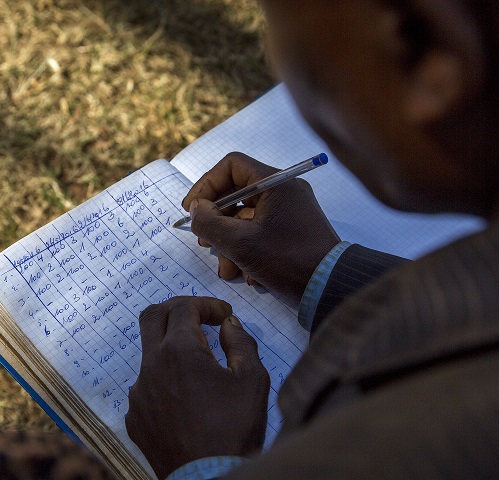
Hand in Hand group savings meeting, Rwanda
Only 5 percent of survey respondents who belonged to pre-existing groups said they were being supported by NGOs. To begin with, says the report, Hand in Hand should focus on the other 95 percent, filling gaps in skills training, the provision of microfinance and links to larger markets. Mobilising the ‘un-grouped’ – the 66 percent majority who worry they cannot save – will require a softer touch, says Ipsos. Here, initial efforts should focus on “community sensitisation… to change negative perceptions”, and “may require a pull factor, e.g. market linkages, to bring people together.” It will also require a programme that addresses climatic shocks head-on, reducing risk in order to incentivise savings and credit. This “can be achieved through Hand in Hand’s entrepreneurship training” in two ways, Ipsos concludes. For starters, early training modules should promote farming practices that mitigate the effects of climate change: irrigation, planting trees to reduce soil erosion and so on. Secondly, once groups are firmly established, training should “prioritise income diversification” and encourage members to launch businesses that generate income all year.
Download the reportHand in Hand a ‘centre of excellence’, says review
Hand in Hand Eastern Africa is a “centre of excellence in training and transforming of Self-Help Groups”.
That’s according to an independent review published by the Abymas Development Practices Centre, a Zimbabwe-based evaluation agency, and funded by the Swedish International Development Cooperation Agency (Sida)/the Swedish Embassy in Nairobi.
The review comes off the back of a two-year, SEK 20 million (US $2.3 million) programme in Kenya, which concluded in March and aimed to achieve three broad objectives:
- To provide business training and marketing support to rural entrepreneurs, resulting in 14,000 jobs.
- To provide Self-Help Group members with access to microfinance.
- To promote green jobs and environmental resilience in partnership with the Government of Kenya’s Agricultural Sector Development Support Programme (ASDSP).
Here’s what it found.
Business training and enterprise development
“The effect of the project in reducing the number of people living below Ksh 3,000 (US $30) has been phenomenal,” concludes the review.
The result was achieved as members moved from subsistence farming into different agricultural value chains such as dairy, while others moved into retail, services, arts and crafts and more.
Retail and services were the two most lucrative types of enterprise, resulting in average monthly sales of Ksh 21,754 (US $217) and Ksh 19,156 (US $191) respectively.
“The Hand in Hand Eastern Africa model of enterprise development and job creation is unique”, the report concludes, “in that it creates a strong foundation for target groups to immediately use knowledge and skills gained to identify enterprise opportunities with the reach of individual entrepreneurs before even receiving external financing.”
By the numbers
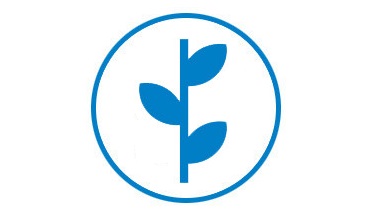 67% of members were engaged farming at the outset of the project. Two years later, that number was down to 48%
67% of members were engaged farming at the outset of the project. Two years later, that number was down to 48%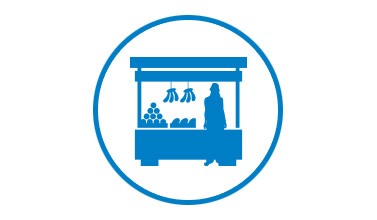 At the same time, the proportion of members working in retail and services rose from 7% to 23%
At the same time, the proportion of members working in retail and services rose from 7% to 23%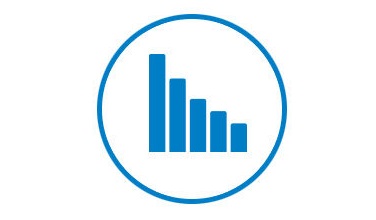 56% of members earned less than Ksh 3,000 (US $30) per month at the outset of the project. By the time it concluded, that number had decreased to only 15%
56% of members earned less than Ksh 3,000 (US $30) per month at the outset of the project. By the time it concluded, that number had decreased to only 15%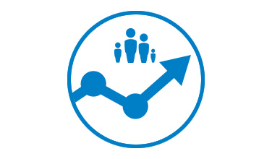 At the same time, the proportion of members earning Ksh 10,000 (US $100) or more per month jumped from 9% to 27%
At the same time, the proportion of members earning Ksh 10,000 (US $100) or more per month jumped from 9% to 27%Gender, social inclusion and culture
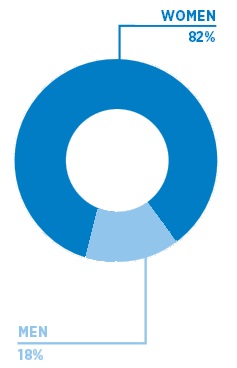
Hand in Hand contributed “significantly to reducing gender inequality in the social and economic life of rural communities in all the targeted geographical areas,” says the report.
Before the project, “most women met during field work pointed out that their life was miserable and hopeless… as they were just working on isolated home activities for survival.” Today, “women have shown confidence in every possible sector,” resulting in “great household resilience, which changes the employment and income dynamics within the household within a very short time.”
Men’s attitudes also changed, “becoming more supportive of women’s participation in SHG activities and viewing women as equal partners in the decision-making process.”
Environmental resilience and green business
Members were “instrumental in championing key environmental initiatives within their households and communities” despite facing “several challenges”, said the report.
Barriers to success included entrenched attitudes and the cost of environmentally friendly technologies. But initiatives including “tree nurseries… stoves for energy saving, waste recycled products in peri-urban areas, water management and conservation, improved sanitation and use of organic manure” proved popular nonetheless, helping members build resilient, sustainable enterprises.
More intensive training and deeper linkages with similar projects were recommended to improve the programme.
Access to microfinance
Hundreds of members borrowed microloans from Hand in Hand Eastern Africa’s Enterprise Incubation Fund (EIF) to help grow their businesses. So far, so good.
At the end of the lending cycle, however, relatively few showed interest in climbing the finance ladder to receive higher interest loans from bigger, more formal lenders – one of the fund’s chief goals. That could spell trouble when the project concludes.
The report suggests two possible solutions.
- Work more closely with microfinance institutions and government agencies to ease members’ climb up the microfinance ladder.
- Provide two distinct types of loans: one for start-ups, another for businesses able to demonstrate market-driven growth. “This will ensure those entrepreneurs that are not growing are churned out at a pre-determined exit point within the loan cycle. At that point they will have acquired entrepreneurship skills, knowledge and experience and will have developed strong mutual support systems (internal savings) that can propel them into the future,” says the report.
Percy Barnevik on The Social Enterprise Podcast
Hand in Hand Co-founder and Honorary Chair Percy Barnevik appeared recently on The Social Enterprise Podcast, presented by Rupert Scofield, president of Microfinancial Institution FINCA and author of ‘The Social Entrepreneur’s Handbook’.
Here’s a description from the Social Enterprise Podcast website:
“On this special episode of the Social Enterprise Podcast, Rupert is joined by businessman and philanthropist Percy Barnevik. After a successful career in business – chairing companies including ABB, Sandvik, Skanska, Investor AB, and AstraZeneca – Percy founded non-profit organisation Hand in Hand International, inspired to help street children in India. Having worked in 14 countries, the organisation provides grassroots entrepreneurs in some of the poorest places in the world with the skills to start their own businesses. Percy reveals his motivations, some of the challenges, and how business informed his approach to charity.”
Listen to the podcast hereHand in Hand International visits Rwanda
Hand in Hand International Head of Media Ann Dickinson is in Rwanda this week visiting some old friends: the same entrepreneurs she met on a visit to the country two years ago. Aloys (pictured), a barber from Eastern Province, is among them.
We’ll be updating their stories soon. Meantime, Ann’s been blogging about her travels for the Huffington Post. Click the links below to follow along.
Hand in Hand teams up with the IKEA Foundation on youth, climate change
Hand in Hand and the IKEA Foundation are teaming up to help thousands of women and young people in rural Kenya work towards a brighter, more environmentally friendly future.
Launched in April with a US $3.6 million grant from the IKEA Foundation, the project will help 43,200 impoverished mothers and young people in Kenya thrive as eco-entrepreneurs, even while inspiring 4,800 future business leaders at Entrepreneurship Clubs in schools. For thousands of children, the results will be transformative: full stomachs, inquiring minds and a world full of potential.
The grant is among the IKEA Foundation’s first after it announced last year it would dedicate €1 billion (US $1.14 billion) to fighting climate change.
“We believe children have better futures when their families earn sustainable incomes, which is why we are supporting Hand in Hand with a US $3.6 million grant,” said Jonathan Spampinato, Head of Communications at IKEA Foundation. “Our partnership with Hand in Hand will help thousands of women and young people in Kenya create jobs and small businesses that can stand up to climate change. We are really excited to launch this partnership and begin our work together!”
Standing up to climate change
Look at poverty differently and you’ll see entrepreneurs, full of energy and ideas. Hand in Hand’s helps harness their potential. They find a way up and out of poverty, boosted by our comprehensive job creation model.
Savings groups and business training in areas such as bookkeeping and marketing aren’t rare. Nor, for that matter, is microfinance. But where other organisations focus on one or two of these elements, Hand in Hand combines all three – then adds a fourth by connecting entrepreneurs to larger markets and value chains.
Our partnership with the IKEA Foundation goes one step further, adding another crucial element: resilience to climate change. That means creating thousands of self-sustaining green businesses in areas like water purification, charcoal briquette production and upcycling. It also means training thousands more agricultural entrepreneurs to farm organically, and to use techniques including crop diversification, irrigation, planting trees to reduce soil erosion and more.
“Impoverished rural communities are on the front lines of climate change,” said Hand in Hand Eastern Africa CEO Pauline Ngari. “Now more than ever, adaptation and mitigation are absolutely crucial. We thank the IKEA Foundation for playing their part, and enabling us to play ours.”
Entrepreneurship Clubs
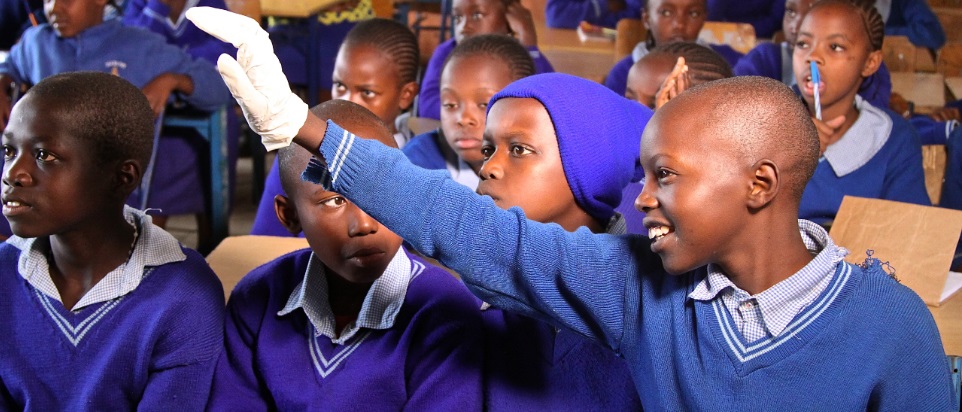
Students in the Entrepreneurship Club at Wangu Primary School, Nairobi.
Empowering mothers to work their way out of poverty is a prerequisite to achieving the first Sustainable Development Goal, to ‘end poverty in all its forms everywhere’. But it raises an important question: if our members received entrepreneurship education earlier in life, would they be struggling as much to begin with?
Thanks to Hand in Hand’s Entrepreneurship Clubs, we’ll soon find out. The after-school clubs teach students aged 10 to 16 the basics of business, culminating in income-generating group projects used to offset participants’ school fees. In a country where high school graduates vastly outnumber available jobs, and where 80 percent of unemployed people are between the ages of 15 and 34, promoting entrepreneurship at school must be part of the solution.
By the numbers
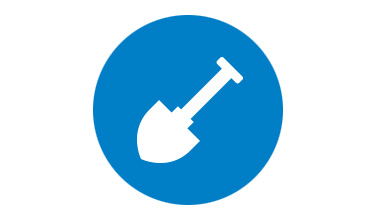
43,200 jobs created
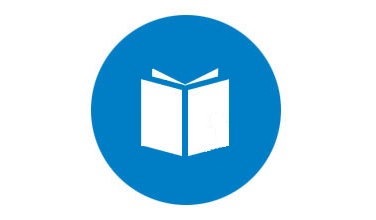
4,800 students in Entrepreneurship Clubs
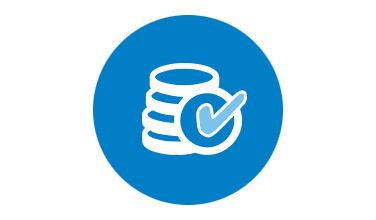
US $3.6 million donated by the IKEA Foundation
Hand in Hand International CEO speaks at Global Parliamentary Conference
By Jessica Schneider
Washington, DC — Hand in Hand CEO Josefine Lindänge hosted a workshop this week at the Global Parliamentary Conference, the second annual meeting of MPs from more than 100 countries held ahead of the IMF/World Bank Spring Meetings.
Titled ‘Educating for the right job – building human capital’, the workshop spanned subjects including different approaches to job creation, the importance of the informal sector and strategies for thinking differently about jobs growth in both the developed and developing world. It was co-hosted by Barry Gardiner MP (UK) and Olfa Soukri Cherif MP (Tunisia).
“Hand in Hand has a model that works. We need to share it as widely as possible,” said Lindänge after the conference. “Explaining our work to a room full of MPs – people in a position to make a real difference – couldn’t be more important, particularly as Hand in Hand continues to grow and search for new partners. Judging by MPs’ reactions, there’s a real appetite for our message.”
The three-day conference featured Christine Lagarde, Managing Director of the IMF, and Jim Yong Kim, President of the World Bank Group, as keynote speakers. Sustainable job creation and women’s empowerment – Hand in Hand’s key areas of expertise – were recurring themes.
“We need to focus on women, education and jobs,” said Kim.
Stephen O’Brien, UN Under Secretary-General for Humanitarian Affairs and Emergency Relief, agreed. “We need to make sure that aid is for the long term, and not just immediate needs…especially for women,” he said.
Hand in Hand also featured in a ‘Youth Job Creation Policy Primer’ produced by Peace Child International and conference organisers The Parliamentary Network. The primer was distributed to the conference’s 250-odd MP guests by Parliamentary Network Chair Jeremy Lefroy MP (UK).
Hand in Hand exceeds targets in Rwanda
Hand in Hand Eastern Africa is “contributing greatly to women’s economic empowerment” in Rwanda, according to a new independent report. Jobs targets in the country have also been vastly exceeded.
Published by independent evaluator DRIS, Bureau d’études et de conseil, the report lends weight to Hand in Hand’s aim, outlined in its 2013-2015 Strategic Plan, to “enter into strategic partnerships in new countries in order to scale up job creation more quickly.”
“Three years ago, we realised that partnering with local NGOs was the quickest, most effective and most sustainable way to reach our goal of creating 10 million jobs,” said Hand in Hand International CEO Josefine Lindänge. “Our experience in Rwanda will help open the door for more partnerships and further expansion in the years to come.”
Hand in Hand launched in Rwanda in 2012. Working with local partner CARE Rwanda, an NGO with years of experience mobilising Self-Help Groups in the country, the plan was to create 80,000 jobs by March 2015. Encouraged by stronger-than-expected results, the program was extended for a year. As of September 2015 – a full seven months before the programme’s conclusion – some 113,650 jobs had been created.
Factors explaining the programme’s success, says the report, include “solid partnerships with local NGOs, an effective supportive supervision system, an effective monitoring system, the complementarity between [CARE] and [Hand in Hand] methodologies and an enabling project environment.”
Other key findings include:
- “The analysis of results show that the most VSLG members were able to hire at least one person and that they are paying their employees in money (98.6%). In the Baseline Study, only 11% of VSLG members reported having hired an employee in the last 12 months.”
- The proportion of group members hiring three, four and five employees is significantly higher (40 percent) among new members (recruited by Hand in Hand) than among previously existing members (27.7 percent).
- Surprisingly, the second highest percentage (17.4 percent) for hiring corresponds to employing six people or more.
- The results show that access to education (98.8 percent) and health insurance (97 percent) is significantly high among group members.
- “Internal loans are being used for consumption and household assets, but also at a remarkable level for business development.”

Businesses started: 78,780
Target: 56,000
Jobs created: 113,662
Target: 80,000
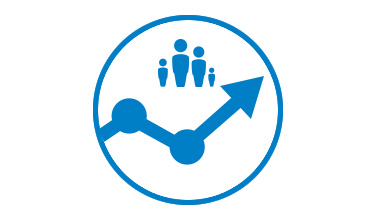
Lives improved: 393,900
Target: 280,000
Hand in Hand Afghanistan Trustee Kamila Sidiqi on PBS News
Hand in Hand Afghanistan Trustee Kamila Sidiqi – the Deputy Chief of Staff to Afghanistan President Ashraf Ghani – featured on PBS Newshour during a recent trip to the US. Watch the video below.
Edit: Kamila Sidiqi left the Hand in Hand Afghanistan board in December 2015.

